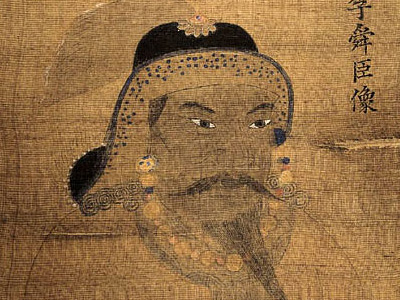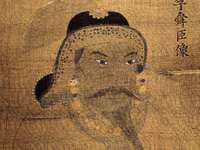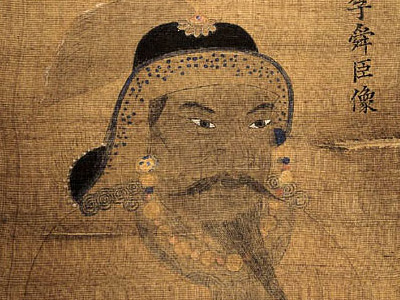Yi Sun-Shin 이순신 (1545-1598)

Battle of Myeongnyang
Admiral Yi located the 13 warships and rallied the 200 surviving sailors. Together with his flagship, Admiral Yi's entire fleet totaled 13 ships, none of which were turtle ships. In the belief that the Joseon fleet would never be restorable, King Seonjo, sent an edict to Admiral Yi to abandon the warships and take his men to join the ground forces under General Gwon Yul. Admiral Yi responded with a letter written "...your servant still doth have twelve warships under his command and he is still alive, that the enemy shall never be safe in the West Sea (the Yellow Sea being the closest body of water to Hanseong)."
Emboldened after their victory at Chilchonryang, Japanese admirals Kurushima Michifusa, Todo Takatora, Kato Yoshiaki, and Wakisaka Yasuharu sailed out of Busan Harbor with a fleet of over 300 ships, confident in being able to defeat Admiral Yi. Elimination of the Joseon fleet would mean unrestricted movement of supplies and reinforcements from Japan for the offensive drive on land towards Hanseong and beyond.
After careful study of potential battlefields, in October 1597 Admiral Yi lured the Japanese fleet into the Myeongnyang Strait, by sending a fast warship near the Japanese naval base and luring the Japanese fleet out of anchorage. The Japanese assumed that this was a Joseon scouting ship and that pursuing it would lead to the location of Admiral Yi, giving them an opportunity to destroy the courageous admiral and the remnants of the Joseon fleet. What they did not know was that they were being lured into a masterfully devised trap.
There were several reasons why Admiral Yi decided on this location for battle. Myeongnyang Strait had currents, eddies, and whirlpools so powerful that ships could only enter safely a few at a time. The north-south tidal flow reversed every three hours, limiting the time that the Japanese could mount an offensive. The strait was sufficiently narrow that it would prove impossible for the Japanese to flank or envelop the numerically inferior Joseon fleet. The deep shadows of the surrounding hillsides provided the Joseon ships with concealment. On that particular day there was also a heavy mist, dramatically reducing visibility in favor of the Joseon fleet. Therefore, despite being vastly outnumbered, Admiral Yi used the terrain restrictions to neutralize the Japanese navy's staggering numerical advantage.
The Japanese fleet of approximately 333 ships (133 warships, at least 200 logistical support ships) entered Myeongnyang Strait in groups. The Japanese ships that made it through were met by 13 Joseon warships obscured by the shadows of the surrounding hills, ready with archers and cannons, and the melee-based Japanese found themselves unable to fight effectively and break through the superior Joseon ranged fire. The unpredictable current eventually wreaked havoc on the Japanese; their ships found themselves unable to maneuver and collided with each other when the tide reversed, while also presenting a perfect target for the Joseon naval artillery. Admiral Yi was astonishingly able to rout a force that outnumbered him more than 25 to 1 in ships alone. About 31 of the 333 Japanese ships that entered the Myeongnyang Strait were destroyed or damaged. Joseon losses on the other hand were around ten casualties and no ships lost. Kurushima Michifusa was killed on his flagship by Joseon archers; his body in its ornate armor was fished out of the water, his severed head was put on display to further demoralize the Japanese fleet.
Admiral Yi's miraculous victory at the Battle of Myeongnyang turned the tide of the entire war against the Japanese; their ground forces on the verge of invading Hanseong were cut off from steady flow of supplies and reinforcements, and forced to pull back. Today, the battle is celebrated in Korea as one of Admiral Yi's greatest victories. No other engagement involving such an outnumbered fleet has resulted in such a disproportionate victory, making it one of the greatest achievements in naval warfare.
HISTORY

RESOURCES
This article uses material from the Wikipedia article "Yi Sun-Shin", which is released under the Creative Commons Attribution-Share-Alike License 3.0.
© Stories Preschool. All Rights Reserved.










